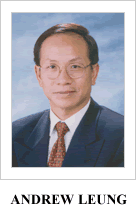By Andrew K.P. Leung (International and Independent China Strategist. Chairman and CEO, Andrew Leung International Consultants and Investments Limited)
 A report on 12 October of the Hindrich Foundation by Stewart Paterson How will China’s Dual Circulation Strategy impact the global economy? suggests that
A report on 12 October of the Hindrich Foundation by Stewart Paterson How will China’s Dual Circulation Strategy impact the global economy? suggests that
– China’s Dual Circulation Strategy (DCS) could sap its market-driven growth potential.
– Potentially slower Chinese growth will de-emphasize China among the foreign business community and weaken investment and trade linkages.
– Lower demand at home may put pressure on the RMB and result in a greater need to “dump” excess capacity overseas, in contrast to the stated aims of DCS. In turn, this will put unwelcome pressure on an already strained framework for multilateral trade.
– Such tension will be rising at a time when the geopolitical ramifications of the linkages between China’s capital account and the global economy have become increasingly evident. Consequently, this may add fuel to the bifurcation of the global economy along ideological lines.
The report may benefit from the following perspectives –
(a) China’s further advancement no longer depends on seeking growth for growth’s sake. Past decades of unbridled market worship has resulted in what former Premier Wen Jiabao labeled “unstable, unbalanced, uncoordinated and unsustainable” development. The new emphasis is on higher-quality and sustainable, if slower, growth, promoting self-reliance, breakthrough technology and innovation, services and domestic consumption, ecological sustainability, and “shared prosperity for all” (against rampant inequality).
(b) In any case, a small economy can register much higher growth rates than a gigantic economy. It’s far easier to make 10% a year on ten dollars, but even five percent annual growth would be enviable with an economy over US$15 trillion.
(c) Moving with the times, both America’s liberal capitalism and China’s state-driven model are moving towards more state intervention where warranted. But despite corrective measures, there is no evidence that the Chinese economy is back to Maoist straitjackets.
(d) The DCS is a two-edged blade. China’s economic engagement with the world is increasing, rather than contracting. In 2020, China’s foreign trade in goods was a staggering US$5 trillion, accounting for more than 30% of GDP. Between January and May this year, China’s total foreign trade continued to grow rapidly by 38%, with total exports rising by 40% and total imports increasing by 36%. Click here In September 2021, China’s exports grew by 28.1% compared with a year earlier, up from 25.6% in August, while imports rose by 17.6% down from 33.1% growth in the previous month. Click here. All goes to show that seasonal ups and downs notwithstanding, global trade linkages remain robust. Indeed, global trade linkages are at the core of China’s Belt and Road Initiative (BRI).
(e) There has been a surge of direct foreign investment (FDI) into China in the first half of 2021, reflecting continuing confidence in the Chinese economy despite complex domestic and external headwinds. Notwithstanding the pandemic, while global aggregate FDI shrank considerably in 2020, FDI in China grew to US$202 billion, topping the world. Click here
(f) While some production facilities are hedging their bets by relocating to neighboring South East Asian countries, many foreign-invested manufacturers in China are there for the nation’s exploding domestic consumption, very much in tune with the DCS.
(g) Thanks to China’s resurgent economic outlook following the pandemics, instead of a weakening RMB, in June this year, China had to rush to pull back the yuan from a three-year high. Click here
(h) As for global connectivity, inflows of foreign capital from economies participating in the BRI increased 49.6 % year-on-year in the first half of 2021, while that from members of the Association of Southeast Asian Nations (ASEAN) rose 50.7 percent and from the European Union (EU) 10.3 percent. Click here
(i) Given US-China rivalry and a “China Scare”, a degree of decoupling from China is inevitable. However, as a central hub of the complex inter-related and inter-dependent supply and value chain, China has become the largest trading partner of two-thirds of the world’s nations. If anything, China is likely to become even more locked into the global and regional supply and value chain as a central hub of the recently launched Regional and Comprehensive Economic Partnership (RCEP), the world’s largest trading bloc consisting of all ASEAN member countries and their main trading partners, representing a third of the world’s population and GDP. Despite some pushback, China’s ubiquitous and reforming BRI, including a Digital Silk Road , is set to cement China’s global connectivity for good measure.
Beijing is unlikely to kill the “market” goose that has helped laid he golden eggs of China’s economic miracle. However, China’s policies are not monolithic. They must keep pace with the times, including the nation’s development trajectory and global dynamics. The DCS seems to fit the bill.
Author: Andrew K.P. Leung (International and Independent China Strategist. Chairman and CEO, Andrew Leung International Consultants and Investments Limited)
(The views expressed in this article belong only to the author and do not necessarily reflect the views of World Geostrategic Insights).







